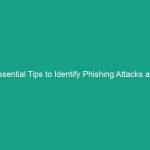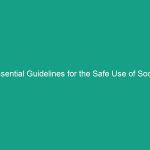Introduction
Good morning team! Today, we’re diving into an essential topic that affects all of us on the job: data security on job sites. With the increasing reliance on digital tools and the internet, safeguarding sensitive information is more crucial than ever. This Toolbox Talk aims to equip you with the knowledge and strategies needed to protect our data and ensure a secure working Environment.
Why is this important? Well, a data breach can have serious implications, not just for the company but for each one of us personally. Let’s explore how we can work together to enhance our Data Security practices.
Understanding Data Security
So, what is data security? It refers to the processes and measures taken to protect sensitive information from unauthorized access, corruption, or theft throughout its lifecycle. On job sites, this includes personal employee information, project plans, financial records, and proprietary data.
The importance of data security cannot be overstated. In our daily operations, we handle various types of sensitive information, and any breach could lead to financial loss, legal issues, and damage to our reputation. Furthermore, many employees may believe that data security is solely the IT department’s responsibility; however, it is a shared responsibility that requires every one of us to be vigilant and informed.
Key Hazards, Risks, and Safety Considerations
When it comes to data security on job sites, several Hazards and risks can compromise sensitive information:
- Unauthorized Access: This occurs when individuals gain access to sensitive information without permission, whether intentionally or unintentionally.
- Data Loss: Accidental deletion or data corruption can lead to loss of critical information, affecting project timelines and operations.
- Malware and Cyber Attacks: Malware can infiltrate systems through emails or unprotected networks, leading to data theft or destruction.
- Inadequate Training: Employees untrained in data security practices may inadvertently expose sensitive information to risks.
Ignoring these risks can lead to severe consequences, including loss of client trust and financial penalties. Let’s commit to understanding these risks and taking the necessary Precautions.
Best Practices, Procedures, & Actionable Advice
Here are some Best Practices to ensure data security on job sites:
- Use Strong Passwords: Always create complex passwords that combine letters, numbers, and symbols. Change your passwords regularly and never share them with others.
- Implement Two-Factor Authentication: Whenever possible, enable two-factor authentication for an extra layer of security.
- Secure Devices: Keep laptops, tablets, and smartphones secure. Use locking mechanisms and never leave devices unattended in public spaces.
- Regularly Update Software: Ensure that all software, including security software, is up-to-date to protect against vulnerabilities.
- Be Wary of Phishing Attempts: Be cautious of emails or messages requesting sensitive information. Always verify the sender’s identity before clicking on links.
- Data Encryption: Encrypt sensitive data to prevent unauthorized access in case of a breach.
- Backup Data Regularly: Implement a backup strategy to ensure that data can be restored in the event of loss or corruption.
For example, consider the recent incident at a construction site where a phishing email resulted in unauthorized access to sensitive project data. The company faced financial penalties and damage to its reputation due to the breach. By adhering to Best Practices, we can avoid similar situations.
Regulations, Standards, and Compliance
Compliance with data protection Regulations is vital for maintaining data security. Relevant Standards include:
- OSHA Regulations: The Occupational Safety and Health Administration (osha) emphasizes the importance of safeguarding employee information.
- ISO Standards: International Organization for Standardization (ISO) provides guidelines for information security management systems.
- Company Policies: Familiarize yourself with our company’s specific data protection policies and Procedures.
Adhering to these standards is not just about compliance; it’s about protecting ourselves and our colleagues. Non-compliance can lead to fines and legal issues, but more importantly, it puts everyone at risk.
Employee Engagement & Discussion
Now that we’ve covered the essentials, I want to hear from you. What Safety challenges have you encountered related to data security on job sites? Have you witnessed any practices that could be improved? Your feedback is crucial in helping us strengthen our data security measures.
Conclusion & Key Takeaways
In conclusion, protecting sensitive information is a collective responsibility that requires vigilance and proactive measures. By following the best practices we discussed today, we can significantly reduce the risks associated with data security on job sites.
Remember, your actions matter. Every time you follow a security protocol, you contribute to a safer workplace for everyone. Thank you for your attention and your commitment to data security. Let’s work together to keep our job sites secure!


